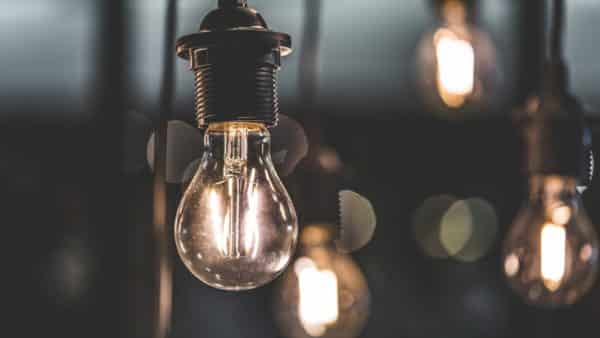Blackout Vs. Brownout: What Is the Difference?

According to the Electric Power Research Institute, the electric grid in the U.S. is 99.9% stable. In fact, the vast majority of outages that do occur are weather-related, such as an area losing power for days as a result of a hurricane. Bad storms aside, power outages are uncommon. When non-weather-related power outages do occur, they generally happen in two forms: brownout and blackout. The fundamental difference is that a brownout is a reduction in power whereas a blackout is a loss of power, but let’s have a closer look at these two types of power outages and see what the differences are on a larger scale.
What Is a Brownout?
A brownout is a dip in voltage in an electrical power supply system. In other words, a brownout is not a loss of power but rather a reduction in the power available. Most temporary voltage sags, which are common, are not brownouts as the term is generally reserved for sags that last for minutes or even hours. The term comes from the dimming of conventional light bulbs that occurs during a voltage sag. That dimming makes the bulbs give off a brownish hue, which is where the name comes from.
How brownouts affect electronics depends on the particular device. Some devices work fine with low voltage. Others do not and can even be damaged. If you are unsure, then you should unplug those devices as a precaution. There is usually a 10-25% reduction in power during a brownout, and your lighting and heating and cooling systems are examples of devices that are generally unaffected during a brownout. Fluctuations in electric grid voltage are to be expected, but these variations are generally nominal in that they are 5% or less, and most electronics are made to handle those relatively small differences.
What Is a Blackout?
A blackout—also referred to as a power outage or power loss—is a total loss of power within a given service area. Blackouts generally occur without warning and last for an indeterminate period. Most blackouts occur due to severe weather, but they can also happen as a result of catastrophic equipment failures. These can occur at primary power stations but also at substations in addition to points along the distribution system, such as transmission lines, circuit breakers and fuses.
Certain electronics are susceptible to damage when there is a sudden loss of power. Personal computers are a prime example of such equipment, which is why it is often recommended to power computers through an uninterruptible power supply. A surge protector is generally advised for any electronic device that does not require a UPS. However, it is also recommended that you unplug all of your devices and surge protectors during a blackout since the restoration of power is when that equipment is most susceptible to being damaged.
What Is a Planned Power Outage?
Planned power outages are sometimes necessary in order to perform maintenance or carry out upgrades to the electrical grid in your area. It is notable that because of advancements in the power grid, planned outages are no longer as common, and you may never experience one. If you do, you’ll receive notice at least 24 hours in advance and usually longer than that. You’ll also receive an estimate of how long the power will be out. Planned outages are typically scheduled for the early morning, such as between 2:00 a.m. and 5:00 a.m. It is recommended that you unplug everything in your household prior to the outage occurring.
Are Brownouts Intentional?
Brownouts—also called voltage slumps or power shortages—can occur as either an intentional or unintentional event. When brownouts occur unintentionally, it is often for the same reasons blackouts occur. The difference in these cases is that the equipment failure limits the capabilities of the system rather than prevents power from being delivered entirely. Most brownouts, however, are planned, and they are similar to the planned power outages discussed above. Brownouts are usually preferrable whenever possible since they allow people in the service area to have lights, refrigeration and other necessities and also make it easier to ensure that critical services remain powered.
Are Rolling Blackouts the Same as Brownouts?
Rolling blackouts are similar to most brownouts in that they are planned by the power company, but they are different in that they involve a total loss of power as opposed to a reduction in power. These planned events are also referred to as “rotational load shedding,” and the term “rolling” in this context refers to the power loss occurring in small areas at a time and in a manner that ensures that no one neighborhood is affected more than the others. Rolling blackouts are scheduled to save power. Whether you experience rolling blackouts in the U.S. depends very much on your region. In California, for instance, they are common during wildfire season to save power but also to help prevent wildfires.
Why Do Unintentional Brownouts and Blackouts Happen?
Some power interruptions are unavoidable and unpredictable, such as power loss that is caused by a bad storm or a traffic accident that knocks out power in a particular neighborhood. But according to Popular Mechanics in a 2020 article, the U.S. experiences more power interruptions than any other developed country, and the reason for this is that the infrastructure is old. Although there have been many great advancements in recent years, most of those upgrades are made to a grid that was built in the 1950s and 1960s with a life expectancy of about 50 years. Utilities in the U.S. are generally private companies, and they have typically taken a break-fix approach to this fundamental issue.
Can You Protect Against a Brownout or Blackout?
All of your electronic devices should be connected to power through a high-quality surge protector. Doing so makes it easier to unplug your devices during a brownout or blackout, and it protects them against the surge that occurs when power is restored in the event you are not at home. You should also consider a UPS for your desktop and laptop computers, and homeowners who want to invest more in protecting against brownouts and blackouts should consider a generator and whole-house surge protection.
What to Do in the Event of a Brownout or Blackout
The first thing you should do is unplug any device that could be damaged when power is restored. If you’re unsure, just unplug everything. You should also turn off the circuit breakers to your heating system, cooling system, water heater and other major appliances. Keep refrigerators and freezers closed. If you’re unsure whether the event is planned or unintentional, call your local power company as well.
Your Local Electric Pros in Seattle
Brennan Electric has served Seattle and the surrounding areas since 1987. That means that we have more than 30 years of experience providing electrical services to area homeowners and businesses. That includes assessments, maintenance, repairs and installations of many different types of electrical systems, including panels, surge protection and generators. Brennan Electric also provides a full range of residential and commercial HVAC services, including the installation, maintenance and repair of heating systems, air conditioning systems and indoor air quality equipment. Call us today or contact us online to schedule an appointment or to learn more about the services and products we offer.

